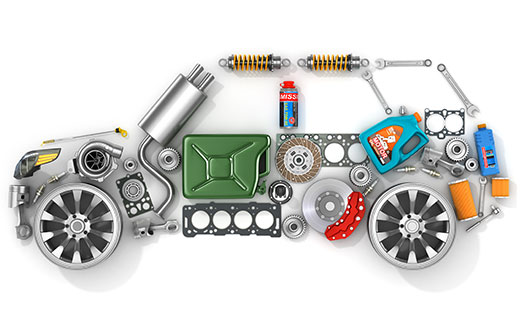Driving Change: How Aftermarket Auto Parts Are Expanding Sustainability
People are keeping their cars longer than ever before, significantly lowering greenhouse gas emissions. Here’s how suppliers can protect and ship parts sustainably.
People are keeping their cars longer than ever before. Over the last ten years, the average age of the American car has increased by 17 percent to 11.9 years old. That’s older than in Europe, where the average age of the passenger car fleet is 10.8. COVID-19 is expected to drive this trend even further, as people tighten their budgets, avoid public places, and engage in less travel.
Interestingly enough, aging cars on the road might be good news for the environment.
A study by Toyota found that 28 percent of the carbon emissions produced over the life of a car will occur during the manufacturing and shipping process. The longer consumers avoid buying a new car, the lower their environmental footprint could be, even if they’re driving a traditional, gasoline-powered vehicle instead of a new hybrid or fully electric car.
However, maintaining cars for longer periods requires significant investment in maintenance and replacement parts. As a result, the global aftermarket automotive industry has grown to be worth an estimated €604.2 billion / £534.4 billion.
In addition to the positive environmental impact of keeping vehicles on the road longer, this market also represents a significant business opportunity with the increased demand in after-market parts. Once cars reach the end of their warranty, consumers are more likely to dodge the dealership for repairs, presenting supply chain challenges for repair shops. The growing prevalence of e-commerce also presents a disruption for auto parts suppliers. Here’s what you should know:
Meeting the Challenges of Shipping
The biggest way to protect profits and limit environmental impact is to ship auto parts only one time. If a part arrives cracked or broken because the package was mishandled, there’s no fixing it — it will have to be replaced. The subsequent shipment will require more packaging and transporting the new item will create more greenhouse gas emissions.
Durable packaging, and selecting the right packaging for your products are key to ensuring parts arrive to customers intact, limiting the environmental footprint of a delivery.
Here’s how to ship items that are:
Fragile
For items that need to be blocked and braced, Pregis’ Easypack on-demand paper systems create customised protection that can be used as cushioning and void fill, or as a wrap for merchandise to protect from damage. Plus, the paper is made of 100 percent recycled content.
Heavy, Oversized, or Irregular-Shaped
One of the toughest aspects of shipping auto parts is that many of them are heavy, large, or oddly-shaped (or all of the above!). That’s where the Easypack Coiler Lite comes in, which helps you rapidly and with ease produce consistent coils into the sizes needed for protecting specific merchandise. The coils provide cushioning while preventing items from moving inside a box.
The Easypack Coiler Lite is used in conjunction with Pregis’ Easypack Packmaster Pro. It is built to the same robust quality and reliability standards and offers best access and smallest footprint in its class.
Easy-to-Scratch
Nothing ruins a car’s shiny aesthetic more than a scratch. So, protective films should be applied to any surface (including glass!) that needs a defence against scratches, dirt, and other nicks.
Eco-Friendly Solutions
Pregis makes various recycled and eco-friendly products for protecting merchandise — a perfect way to increase the sustainability profile of your operation. Our Renew air cushion and Easypack paper solutions are made of recycled content to limit environmental impact without sacrificing performance. They are designed to serve as void fill, wrap merchandise, or block and brace.
Ready to start shipping auto parts with a minimal aftermarket footprint?
Read the Pregis Purpose to learn more about our sustainability initiatives and how they can help you and your customers become more eco-friendly in 2021.

